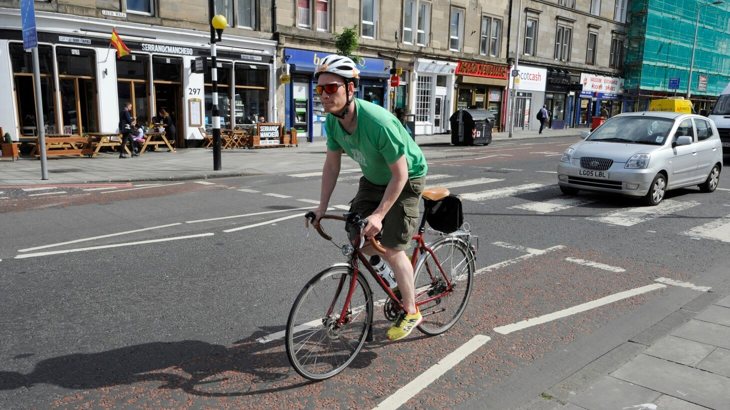Safety is often cited as the main reason why people don’t cycle for more of the journeys they make every day. And the recent findings on Scotland’s cycle collision hotspots, only serve to highlight the importance of having high-quality infrastructure in place at junctions, so that collisions can be prevented.

Cycle safety and collision hotspots
The report published by Sustrans’ Scottish Research Programme, identified locations which had a relatively high number of collisions, compared to the level of cycling activity in the area, between 2005 and 2014.
It also assessed the severity of cyclist causalities at each location and scored this against the population size in each area and the number of people in the vicinity who had reported they cycled to work in the 2011 Census.
Safety concerns highlight the importance of high-quality infrastructure
The report found that out of the top 20 ranked locations for cycle collisions in Scotland, 19 of the incidents occurred at a junction or within 20 meters of one.
Roundabouts were where collisions most frequently occurred, appearing in eight of the 20 hotspot locations, whilst seven of the locations were at T or staggered junctions.
Safety in numbers
Although the report found that Edinburgh recorded the locations with the highest number of cycle collisions over the nine-year period, once researchers took into account the relative number of cyclists in an area and the severity of the collisions, they found that a greater number of hotspots were based in or around greater Glasgow.
This was because even though the greater Glasgow area had a higher urban population, the proportion of people who cycled to work was low in comparison.
This highlights the fact that in areas where cycling is more popular, the risk of collisions occurring decreases. Research suggests that doubling cycling leads to a reduction in the risks of cycling by around a third, partly because drivers have increased awareness of people on bikes and because an area is more likely to have cycling infrastructure.

